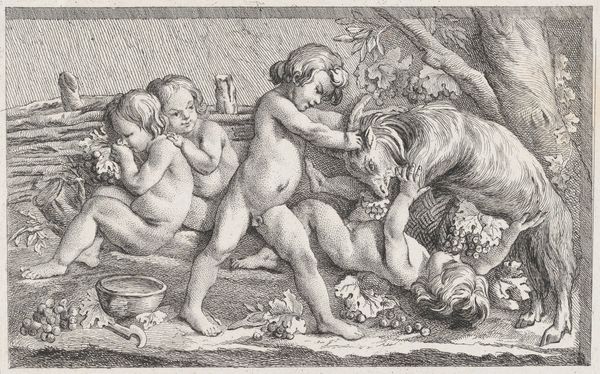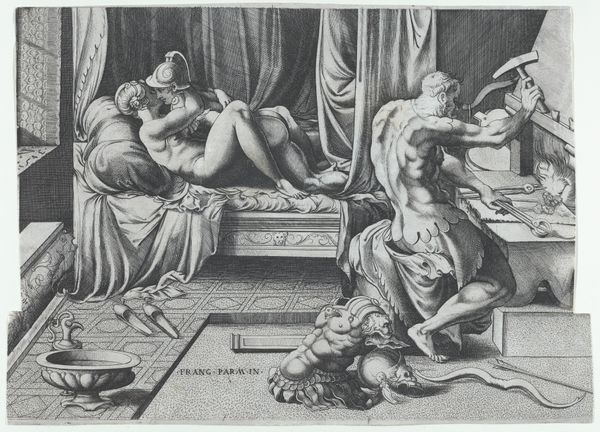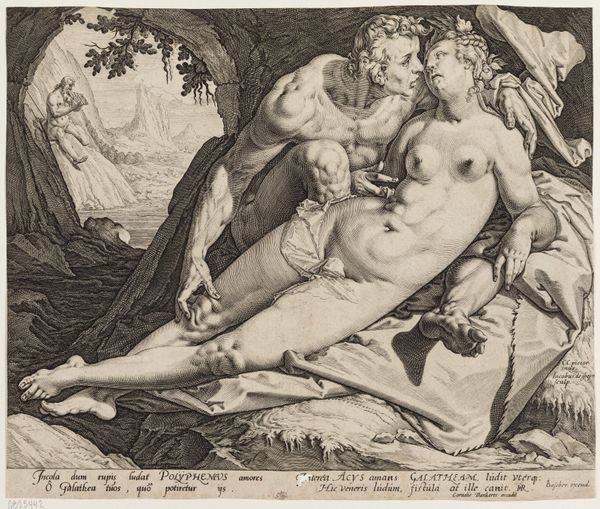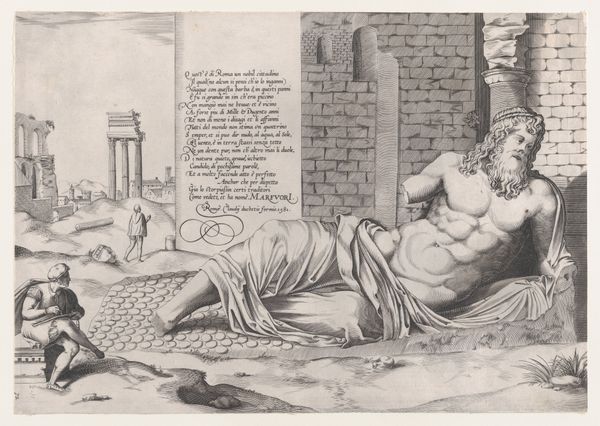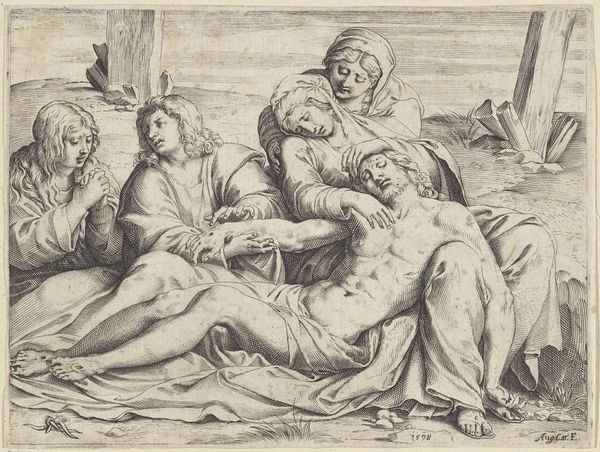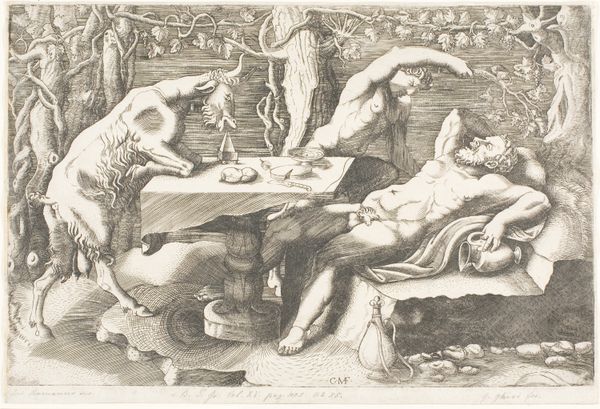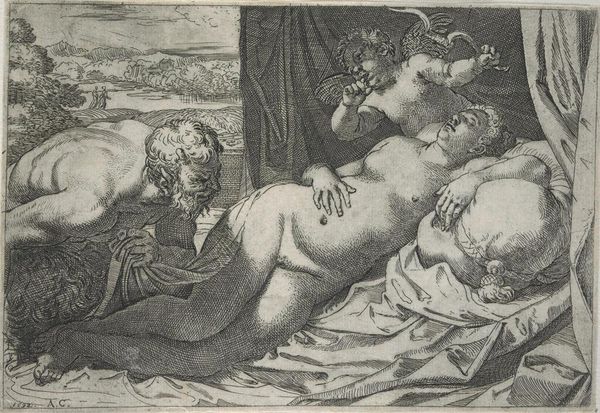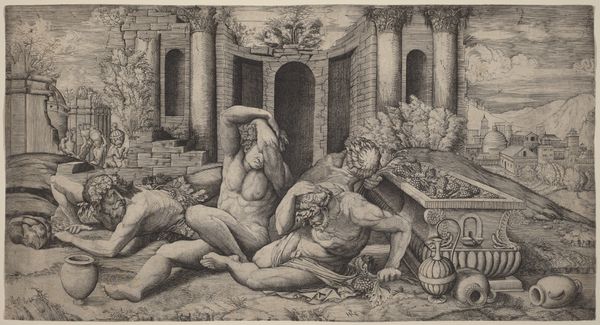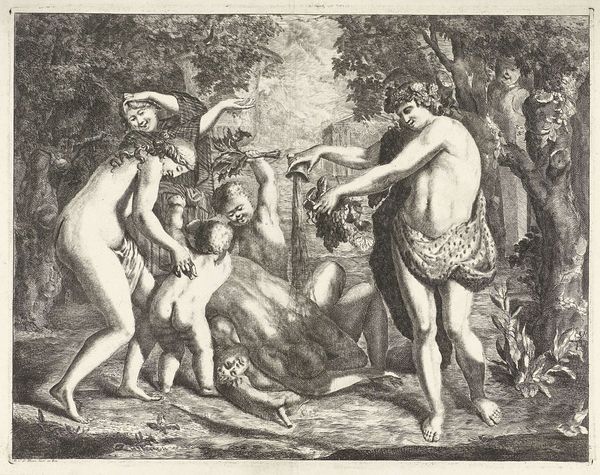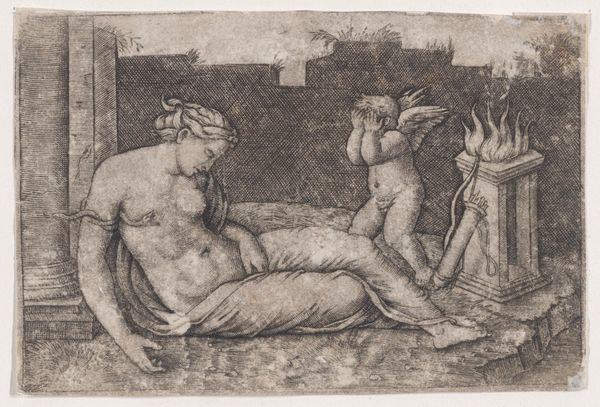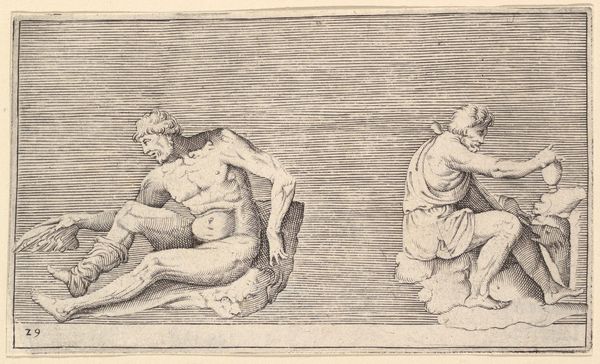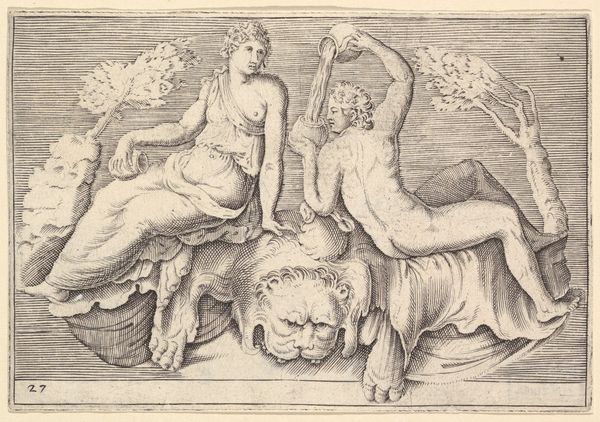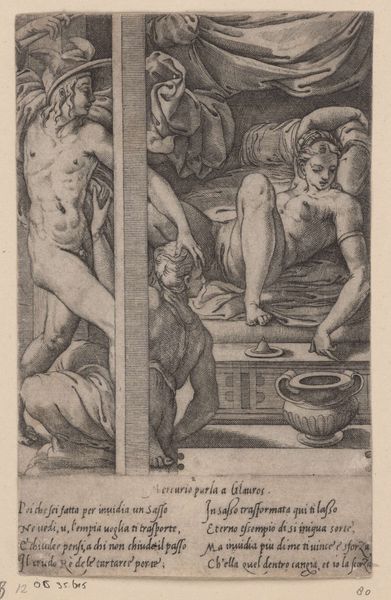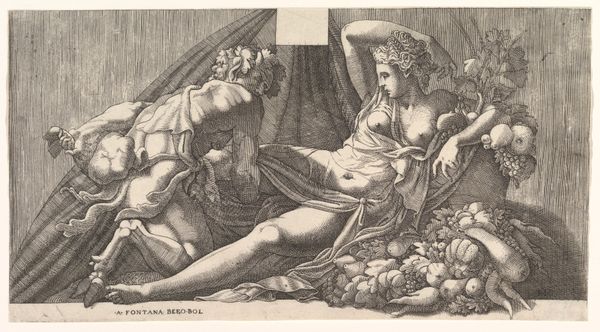
drawing, print, engraving
#
drawing
#
allegory
# print
#
mannerism
#
portrait drawing
#
italian-renaissance
#
nude
#
engraving
Dimensions: 3 1/4 x 5 in. (8.2 x 12.7 cm)
Copyright: Public Domain
Curator: I’m struck by the contrast of shadow and light in this engraving. Editor: Indeed, Agostino Veneziano's "Cleopatra," created sometime between 1523 and 1533, employs strong contrasts characteristic of Mannerism. It’s quite compelling as a study of grief. The composition is heavy, but the line work is immaculate. Curator: The means of production are fascinating. This printmaking technique suggests a society valuing reproducible images, blurring the line between fine art object and mass communication. Also, Cleopatra, the subject is very eroticized with her bare body almost sprawling vulnerably across the foreground. The tools to construct her are important here and how gender dynamics and class constructs affected what an audience may perceive as erotic. Editor: And within its historical context, consider the rise of printmaking itself as a democratizing force. The story of Cleopatra was well known, yet made newly accessible in a more widely distributed form, prompting reinterpretations and public discourse about the famous queen’s agency, even her power over Rome, that certainly echoed throughout the Renaissance. She becomes not just a figure of tragedy but one of potent resistance. Curator: I can’t help but see the artist using labor—etching, carving—to disseminate stories. The materials are paper, ink, metal – mass producible goods facilitating stories like this. Look closely and you can also see Cupid, crying near a blazing pyre, whose flame has taken hold to two quivers beside. This engraving process, the reproducibility of images—it democratized art to a degree. Editor: Absolutely. The distribution and consumption of prints like this further shaped collective memory of historical figures. And the allegorical elements--Cupid’s grief, the snake coiled around her arm—they aren’t just artistic embellishments, but pieces contributing to the historical reception, crafting and solidifying the narratives that circulated about her. These prints had social and political ramifications. Curator: Fascinating how these material processes shaped public perception. Thank you for that contextual overview. Editor: My pleasure, understanding this interplay opens our eyes to how historical narratives are really made, reproduced, and even contested, doesn't it?
Comments
No comments
Be the first to comment and join the conversation on the ultimate creative platform.
